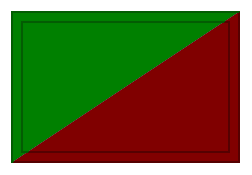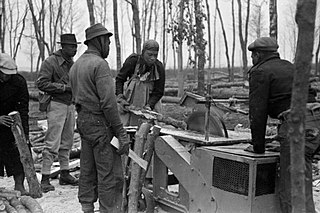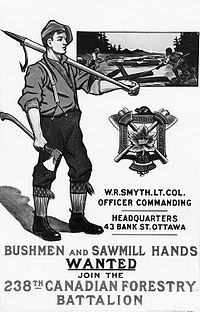
Fusilier is a name given to various kinds of soldiers; its meaning depends on the historical context. While fusilier is derived from the 17th-century French word fusil – meaning a type of flintlock musket – the term has been used in contrasting ways in different countries and at different times, including soldiers guarding artillery, various elite units, ordinary line infantry and other uses.

The Lancashire Fusiliers was a line infantry regiment of the British Army that saw distinguished service through many years and wars, including the Second Boer War, the First and Second World Wars, and had many different titles throughout its 280 years of existence. In 1968 the regiment was amalgamated with the other regiments of the Fusilier Brigade – the Royal Northumberland Fusiliers, Royal Warwickshire Fusiliers and the Royal Fusiliers – to form the current Royal Regiment of Fusiliers.

The Royal Newfoundland Regiment is a Primary Reserve infantry regiment of the Canadian Army. It is part of the 5th Canadian Division's 37 Canadian Brigade Group.

The Sherbrooke Hussars is a Primary Reserve armoured regiment of the Canadian Forces

The Royal Highland Fusiliers of Canada is a Primary Reserve light infantry regiment of the Canadian Army, with companies in Cambridge and Kitchener, and is an infantry sub-unit of 31 Canadian Brigade Group, headquartered in London, Ontario. The Princess Margaret, Countess of Snowdon and The Prince Andrew, Duke of York, as members of the Canadian Royal Family, acted as Colonel-in-Chief.

Sir Alfred James Munnings, is known as having been one of England's finest painters of horses, and as an outspoken critic of Modernism. Engaged by Lord Beaverbrook's Canadian War Memorials Fund after the Great War, he earned several prestigious commissions, which made him wealthy. Between 1912 and 1914 he was a member of the Newlyn School of artists. His work was part of the art competitions at the 1928 Summer Olympics, the 1932 Summer Olympics, and the 1948 Summer Olympics.
The Peel and Dufferin Regiment was an infantry regiment of the Non-Permanent Active Militia of the Canadian Militia. First organized in 1866 as the 36th Peel Battalion of Infantry, the regiment was reorganized in 1900 as the 36th Peel Regiment. Following the First World War, the regiment was reorganized again in 1920 as The Peel Regiment and for the final time in 1923 as The Peel and Dufferin Regiment. In 1936, the regiment was Amalgamated with The Lorne Rifles (Scottish) to form The Lorne Scots.

The Highland Light Infantry of Canada was an infantry regiment of the Canadian Army. In 1965, the regiment was amalgamated with The Scots Fusiliers of Canada to form The Highland Fusiliers of Canada.

The 2nd/10th Dragoons was a militia regiment of the Canadian Army, based in the Niagara, Wentworth, and Brant regions of southern Ontario. It was formed in 1936 by amalgamating the 2nd and 10th Dragoons, both of which had served previously as cavalry units in the Canadian militia. After World War II the regiment was converted into an anti-aircraft artillery unit. In 1962 the regiment was converted into a field howitzer unit and in 1968 amid a downsizing of the Canadian Armed Forces the regiment was reduced drastically before eventually being completely disbanded in the mid-1990s. The regiment is currently on the Supplementary Order of Battle.

The 8th Canadian Infantry Division was a military formation of the Canadian Army that served within Pacific Command in Western Canada during World War II. The Division units were raised on 18 March 1942 and the HQ was raised on 12 May 1942 at Prince George, BC. The Division was a home defence unit, initially consisting of the 19th, 20th, and 21st Canadian Infantry Brigades. In July the home Defence Divisions were reorganised and the 8th Division consisted of the 14th and 16th Infantry Brigades. The 19th Brigade went to the 6th Canadian Infantry Division, the 20th went to the 7th Canadian Infantry Division, and the 21st would remain at Valcartier, PQ as a strategic reserve. The 8th Canadian Infantry Division was disbanded on 15 October 1943, along with the 16th Brigade. The 14th Brigade returned to the 6th Division.

The Women's Timber Corps (WTC) was a British civilian organisation created during the Second World War to work in forestry, replacing men who had left to join the armed forces. Women who joined the WTC were commonly known as Lumber Jills.
The 156th Brigade was an infantry brigade formation of the British Army. The brigade saw active service in both the First and the Second World Wars with the 52nd (Lowland) Infantry Division.
The 155th Brigade was an infantry brigade of the British Army that saw active service in both the First and the Second World Wars. Assigned to the 52nd (Lowland) Division, the brigade saw active service in the Middle East and on the Western Front during the First World War. During the Second World War, now the 155th Infantry Brigade, it continued to serve with the 52nd Division in Operation Dynamo, and later in North-western Europe from late 1944 until May 1945.
The Liverpool Brigade, later 165th (Liverpool) Brigade was an infantry brigade of Britain's Volunteer Force that served during World War I with the 55th Division of the British Army. During World War II, again as part of the 55th Infantry Division, the brigade remained in the United Kingdom.
The Canadian Fusiliers (City of London Regiment) was an infantry regiment of the Non-Permanent Active Militia of the Canadian Militia (now the Canadian Army). In 1954, the regiment was amalgamated with The Oxford Rifles to form The London and Oxford Fusiliers (now the reserve battalion of the Royal Canadian Regiment).

The British Honduran Forestry Unit (BHFU) was a civilian body of forestry workers who came from British Honduras to Scotland in two contingents to help support the war effort during the Second World War. 900 workers came, the first 500 arriving in September 1941 and were dispersed to camps in Traprain Law, East Lothian, Duns, Scottish Borders, and Kirkpatrick Fleming, Dumfries and Galloway. The second contingent of 400 arrived in November 1942, and were allocated to Golspie, Sutherland, and Kinlochewe and Achnashellach both in Wester Ross. In 1943 the Unit was disbanded.
The Saskatoon Light Infantry was an infantry regiment of the Non-Permanent Active Militia of the Canadian Militia. The regiment was formed in 1924, when The North Saskatchewan Regiment (1920–1924) was reorganized into four separate regiments. In 1955, the regiment was amalgamated with The Prince Albert and Battleford Volunteers to form The North Saskatchewan Regiment.
The Saint John Fusiliers was an infantry regiment of the Non-Permanent Active Militia of the Canadian Militia. In 1946, the regiment was amalgamated with The New Brunswick Rangers to form the South New Brunswick Regiment which was later renamed as The New Brunswick Scottish. They now form part of the 1st Battalion, The Royal New Brunswick Regiment.
The North Saskatchewan Regiment was a short-lived infantry regiment of the Non-Permanent Active Militia of the Canadian Militia. In 1924, the regiment was reorganized and split up into 4 separate regiments.
The Newfoundland Overseas Forestry Unit (NOFU) was a civilian unit comprised of skilled forestry workers who came from Newfoundland to Scotland to support the war effort during the Second World War. It was formed on 17th November 1939 and was disbanded in 1946.













